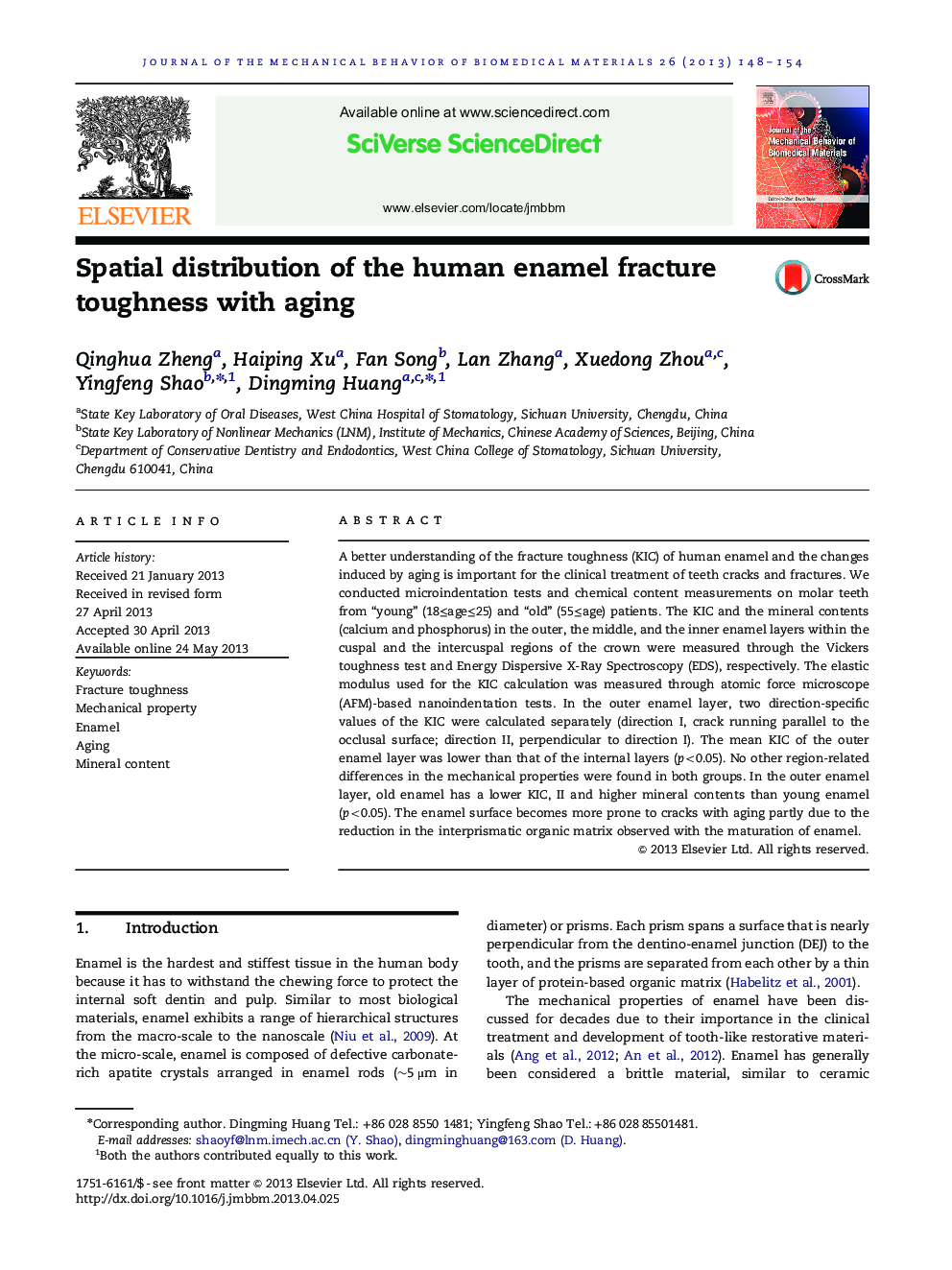| Article ID | Journal | Published Year | Pages | File Type |
|---|---|---|---|---|
| 810844 | Journal of the Mechanical Behavior of Biomedical Materials | 2013 | 7 Pages |
A better understanding of the fracture toughness (KIC) of human enamel and the changes induced by aging is important for the clinical treatment of teeth cracks and fractures. We conducted microindentation tests and chemical content measurements on molar teeth from “young” (18≤age≤25) and “old” (55≤age) patients. The KIC and the mineral contents (calcium and phosphorus) in the outer, the middle, and the inner enamel layers within the cuspal and the intercuspal regions of the crown were measured through the Vickers toughness test and Energy Dispersive X-Ray Spectroscopy (EDS), respectively. The elastic modulus used for the KIC calculation was measured through atomic force microscope (AFM)-based nanoindentation tests. In the outer enamel layer, two direction-specific values of the KIC were calculated separately (direction I, crack running parallel to the occlusal surface; direction II, perpendicular to direction I). The mean KIC of the outer enamel layer was lower than that of the internal layers (p<0.05). No other region-related differences in the mechanical properties were found in both groups. In the outer enamel layer, old enamel has a lower KIC, II and higher mineral contents than young enamel (p<0.05). The enamel surface becomes more prone to cracks with aging partly due to the reduction in the interprismatic organic matrix observed with the maturation of enamel.
